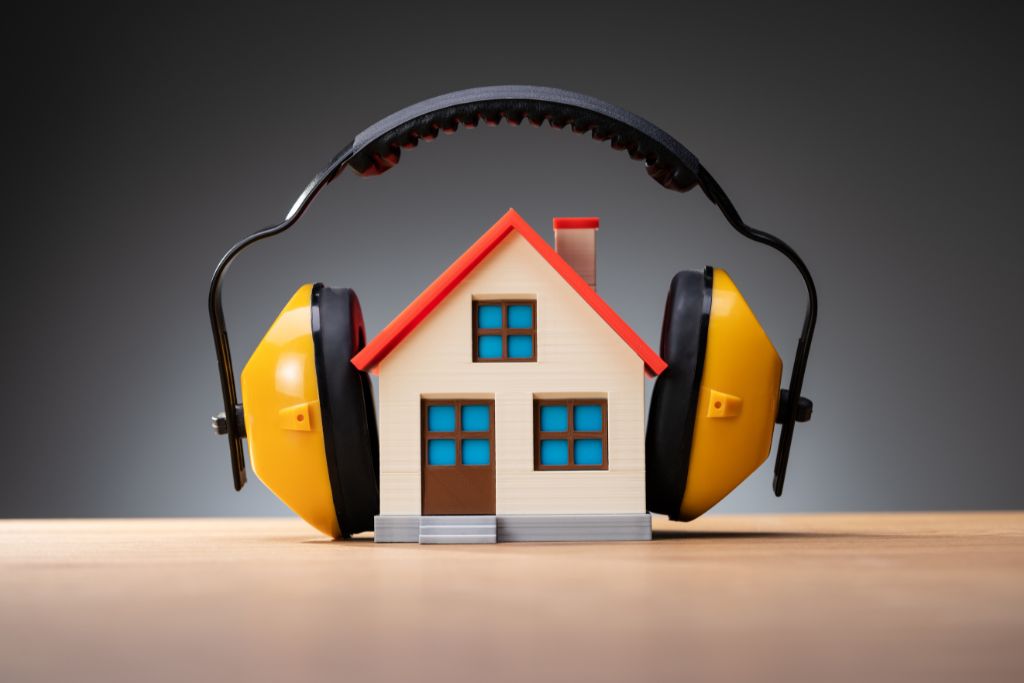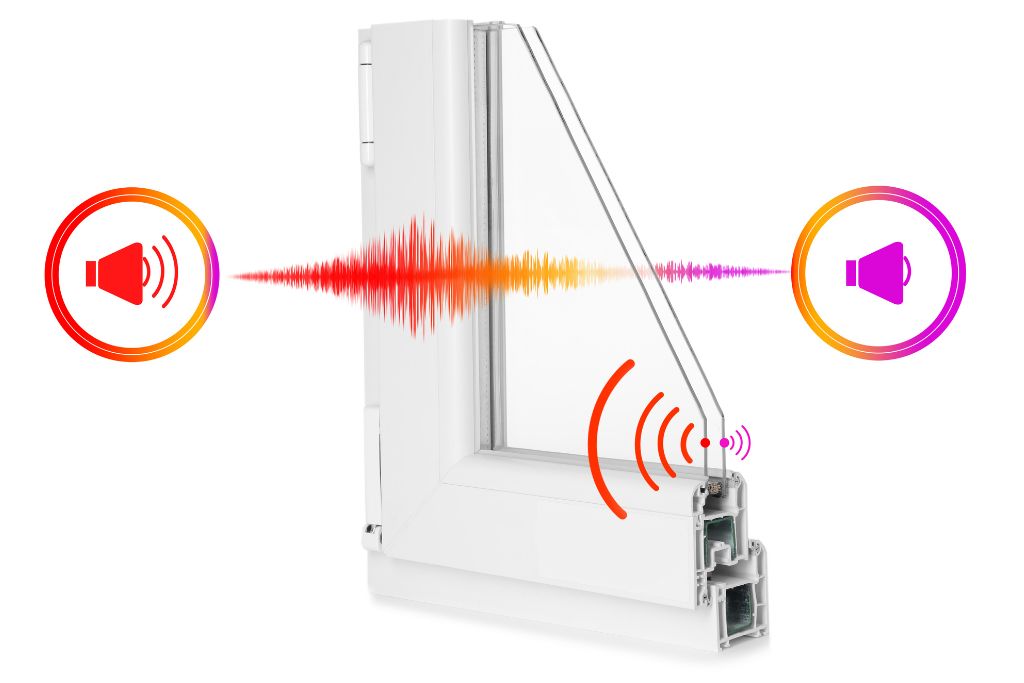06 September, 2022
windows

When buying windows, we expect that they will protect the interior against external factors – primarily temperature and noise. The acoustic insulation of the entire building depends on several factors, including window and door joinery. And what determines the sound insulation of the windows themselves? How to choose them to „calm down” the interior and ensure comfort during the day and at night? Especially for people living in the city, noise is a big problem – the sounds of a busy street, trains or trams can be bothersome and even harmful.
Similarly, when we live near a school, factory or in the vicinity of large shopping or sports facilities, constant noises coming from outside may disturb peace, negatively affect concentration, and disturb rest and sleep.
We do not always have the opportunity to live in the most favourable distance from the noise source. In an apartment in a city space, noise is even inscribed. What we can do is take care of the acoustic insulation of the partitions – incl.
The acoustic insulation of windows is influenced by a number of factors. First, let's think about glazing, which is the largest percentage of the window area. However, there are several pathways for noise transmission. The following are important:
When it comes to glass, we will achieve the best effect in the case of windows with multi-layer glazing with large, but varied thickness of layers. Increasing the acoustic comfort is possible thanks to the construction of a combination based on the asymmetric thickness of the glass used in the glazing unit and the use of laminated glass with a special acoustic foil.

These solutions cause various ways of changing the characteristics of acoustic waves. In order to achieve the highest noise attenuation values, it is recommended to choose glazing packages containing both these features.
It is worth paying attention to the fittings – the good quality ones will have a positive effect on the tightness, and thus the sound insulation of the window. Correct fitting of the sash to the frame after the window is closed is important.
A large number of diffusers, from the perspective of reducing noise from the outside, is also disadvantageous. The larger the window area, the worse their sound insulation, as a rule, is.
To enjoy the quiet interior, let's take care of not only well-chosen products, but also professional installation of the woodwork. The window must be tight, rigid and stable. If it wobbles or vibrates, it will transmit noise, so we can also treat installation as one of the factors that affect the acoustic insulation of the window.
Simply put, the acoustic insulation of windows or doors is their ability to reduce the flow of sound or vibrations, both from the outside and inside, when they are closed. The higher the insulation, the better the interior of the building is muted by windows and doors. Acoustic insulation is determined by the Rw (C, Ctr) index, and it is given in decibels (dB).
The standards applicable in the European Union (EN 14351-1) indicate that the sound insulation declared by manufacturers should be declared using the Rw value, with the correction of the C and Ctr factors (which are always negative):
The designations RA1 and RA2 for the so-called indicators for assessing the acoustic insulation of windows, for which we use the following calculations:
Example:
Selected windows that meet the aesthetic needs of the household members and will be appropriate for the facade of the building, have an Rw which is 38 dB (-1, -4). However, this is not the actual noise reduction level of the window. To get to know it, the Rw parameter should be corrected by the values of the C and Ctr coefficients.
What do the results mean in practice? If the building is located near a medium and high frequency sound source, the selected window reduces external noise by 37 dB. If the sound source is of low and medium frequency, the window sound insulation level will drop to 34 dB.
Is this window insulation sufficient to ensure sound comfort in an apartment or house? It depends on the noise level outside and the expected sound level inside the building. The proximity of a street, railway line or airport can make noise as high as 60-80 dB. In turn, the Polish construction standard PN-B-02151-3: 2015-10 "Building acoustics - Protection against noise in buildings" indicates that the noise level in residential buildings should not exceed 40 dB during the day and 30 dB at night.
Example:
Let's assume that the building where we want to replace the window is located near a busy street, which generates noise at the level of 60 dB during the day. The windows we have selected have a sound reduction index of 34 dB. In this case, the obtained difference is 36 dB. If we want to find out if the selected windows will protect us from this noise, it is enough to subtract 34 dB from 60 dB, which gives 26 dB. Therefore, the analysed windows will ensure an appropriate level of sound insulation only during the day.
It is worth mentioning how the obtained results compare to the actual reception of noise for our ears. Limiting its level in the room by 1 dB will be practically imperceptible, and by 3 dB you will barely feel it. We will notice a clear difference only at 5 dB, and we will perceive 10 dB as reducing the noise level by half.

To sum up, the acoustic insulation of windows depends largely on the glazing, but also on the appropriate pressure to the frame, correct installation, and even elements such as air inlets. Whether we feel comfort at home and the room will be quiet is also related to what type of sounds and to what intensity they reach the interior of the building from the outside.
Therefore, before choosing window frames, we should assess the noise level in the area where we live or intend to live. In precise calculations and the final selection of windows, it is worth relying on the knowledge and experience of designers and specialists who deal with the sale and installation of window joinery.

Hotline: +48 572 337 243 Contact for new business customers only. Connection fee in accordance with the operator`s price list.
E-mail: quoteus@ekookna.com newclientus@ekookna.com Contact for business customers only.
Eko-Okna S.A.
Kornice, ul. Spacerowa 4
47-480 Pietrowice Wielkie
NIP: 6391813241
KRS: 0000586067